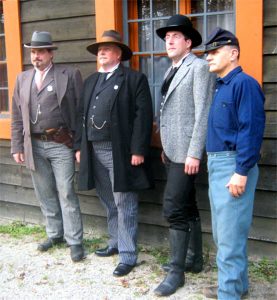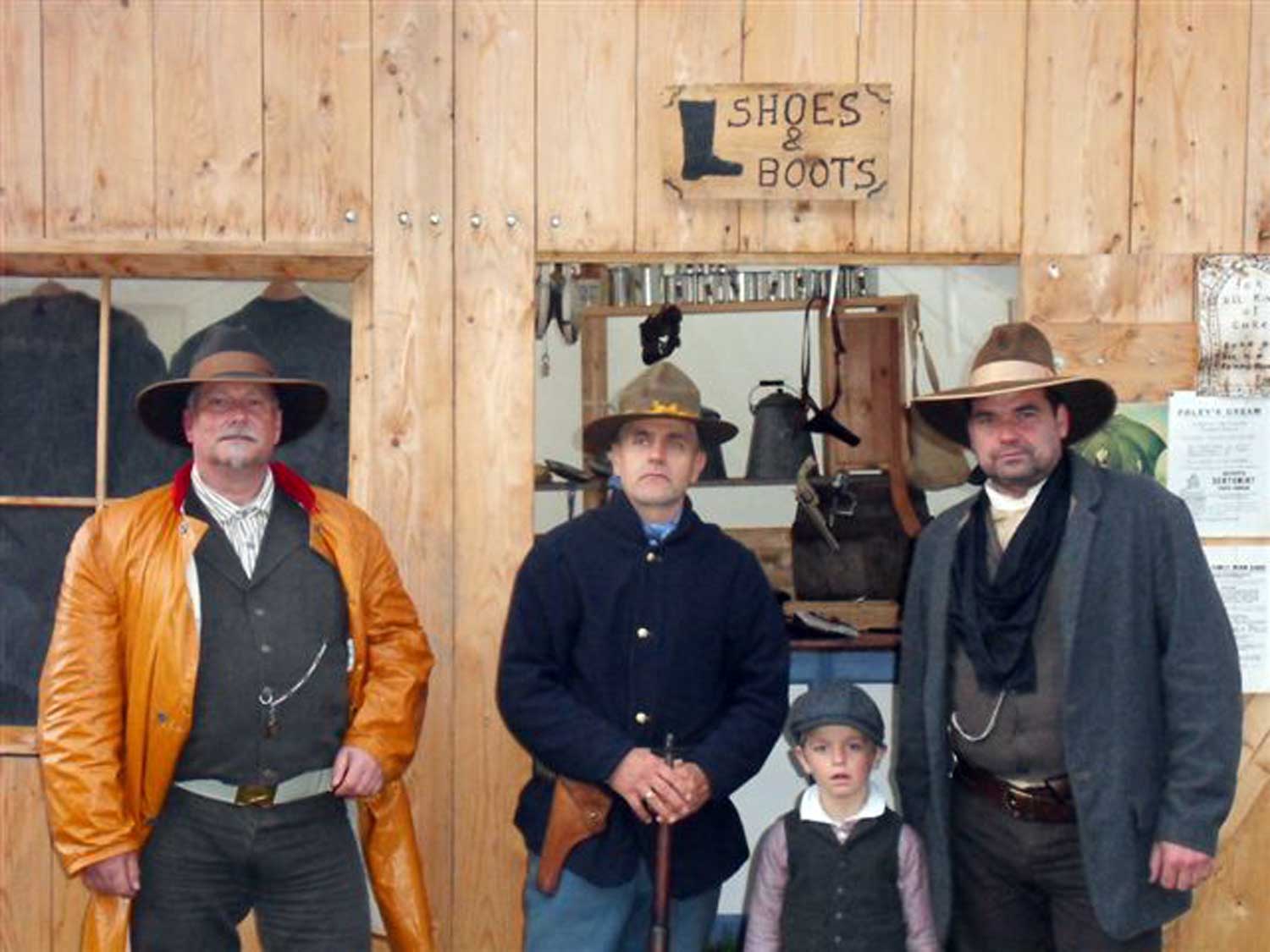The Conquest of the West
The goal of the “OldWest” impression era is to depict the period between 1866 and 1910 in western North America. Lives and work of settlers, cowboys, buffalo hunters, gold diggers, gamblers, townspeople and soldiers. An impression for the entire family!
The era of the “Wild West” was characterized by a spirit of optimism in which more and more people from the increasingly densely populated eastern United States headed west, including a large number of immigrants, especially from Europe.
 The pioneers’ motivation was shaped by different reasons. For most people, settling in the eastern states was unaffordable. In the West, on the other hand, there were large areas in which settlers hoped to get cheap land (legally secured by the “Homestead Act” of 1862) in order to settle down with agricultural work as farmers or ranchers (cattle breeders with pasture farming). Still others sought quick wealth in the hope of finding precious metals such as gold, silver or other mineral resources. When gold was found near San Francisco in 1848, it triggered the California Gold Rush, the largest “gold fever” in U.S. history to date, which significantly increased the treks westward.
The pioneers’ motivation was shaped by different reasons. For most people, settling in the eastern states was unaffordable. In the West, on the other hand, there were large areas in which settlers hoped to get cheap land (legally secured by the “Homestead Act” of 1862) in order to settle down with agricultural work as farmers or ranchers (cattle breeders with pasture farming). Still others sought quick wealth in the hope of finding precious metals such as gold, silver or other mineral resources. When gold was found near San Francisco in 1848, it triggered the California Gold Rush, the largest “gold fever” in U.S. history to date, which significantly increased the treks westward.
The conquest of the West of the USA was initially strongly characterized by the violent push back of the native population, the Indians, and a corresponding policy of subjugation and partial extermination towards them. Along with this and also afterwards, the infrastructural development of the country played an important role, for example through the postal and transport system in the 1860s, characterized by the stagecoach lines of the “Wells-Fargo Company” and the “Pony Express” after the transcontinental railway construction and the construction of telegraph lines is increasingly being replaced by faster, cheaper and safer developments in overland transport and the transmission of information.
